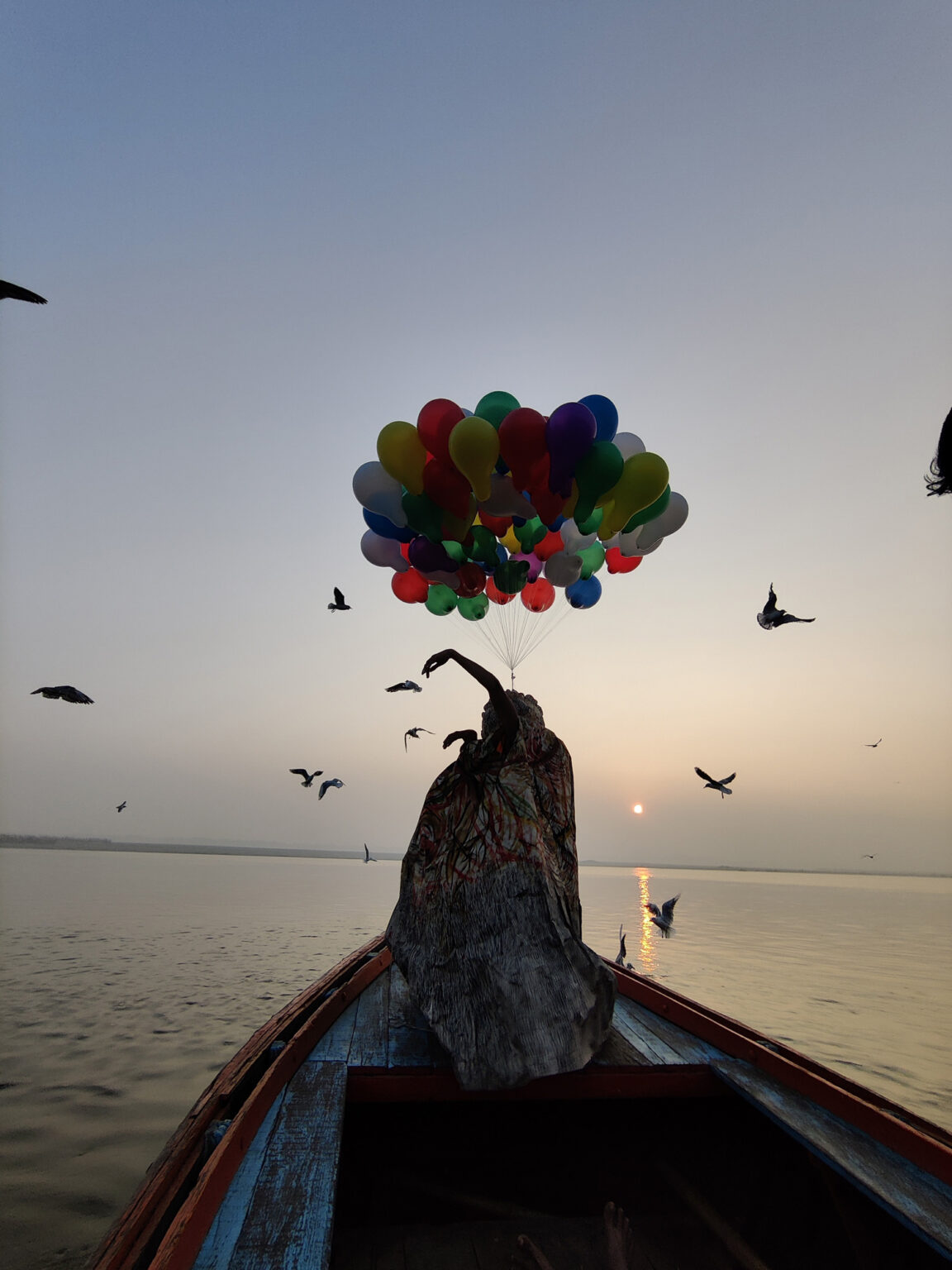
Image Credit - India Art Fair * Debashish Paul
Young Debashish Paul, the India Art Fair artist-in-residence, grew up seeing his sisters and sisters-in-law doing what normal village women in Bengal do: sew, stitch and, most important, play dress up. At Phulia village in West Bengal's Nadia district - well-known for its spiritual links with Krishna -- Paul was immersed in an unending journey of kirtans (religious story-telling festivals on special occasions) where he would play the role of Shiva, Sita or Radha. That, says Paul, was the beginning of his quest to create drawings of figures in other-worldly garments as well as an exploration about the problems of queer identity in a society dominated by heterosexual norms.
Over the years - and after he lived and studied in the deeply-spiritual and historic city of Benaras where he completed his Master's Degree in Sculpture from the Banaras Hindu University in 2019 - these drawings of other-worldly figures have turned to 'automatic' performances featuring the artist himself. It is in these performances that Paul creates what he describes as a “ritual environment” in which the body and its expressions are considered sacred.
Benaras has had a deep impact on the young artist. While he remembers his stay in the city in unblurred pictures, the vibrant life and spiritual energy remains an inspiration for him. That is because in the holy city of Benaras, people, gods, death and life come in “the most amazing costumes”. Whenever he is in the city, Paul goes out every evening for a walk. That, he candidly maintains, is his studio practice. So, his studio comprises Benaras and all that it contains: the sadhus in saffron and ash, the cows, the dogs and even the goats. He sees them all along with the sights, the smells and sounds that ultimately become part of his body. These coalesce to germinate an idea in his mind and that results in a “performance”.
It is the pandemic and the subsequent lockdown that changed Paul in 2020. It gave him time to look closely at himself “with concentration”. That period saw him experimenting with his art. He researched and experimented with textiles and sewing techniques. That gave rise to his desire to wear dresses, “so I decided to make one for myself”. From that first “dress” many 'sculptural dresses' have been created from painted fabrics and rice paper and used on gender-less forms.
Today, Debashish Paul's work as an artist has evolved to include a wide range of mediums: from sculptural dress to performances, videos and drawings. His quest is to explore homosexuality that he does by treating the body as a landscape to generate new references to queer identities. His sculptural costumes and connected performances provide no references to males or females. They hide and unveil, at the same time, the fragile emotions and desires that prevail in our society.